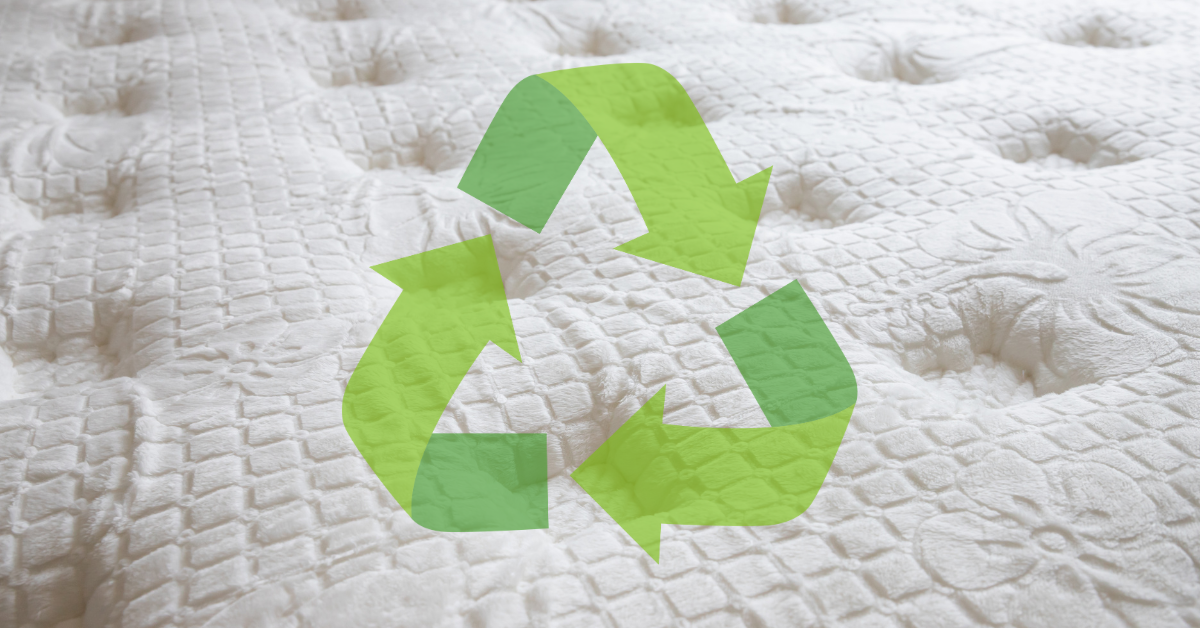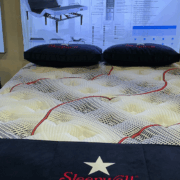Low-cost mattresses proliferating on Amazon and other online retail sites are one of the newest challenges facing the Mattress Recycling Council, the bedding industry’s recycling group.
The MRC, celebrating its 10th anniversary this year, has made great strides in its first decade of service since the program launched in Connecticut. The program, which now recycles mattresses in three other states as well — California, Rhode Island and Oregon — has recycled more than 15 million mattresses and box springs, officials say. Those units would have filled 14.9 million cubic yards of landfill space.
In the past decade, the MRC has emerged as one of the largest mattress recycling organizations in the world.
But it faces complex challenges, including a steady flow of mattresses heading into landfills each year. The MRC estimates that 15 million to 20 million mattresses are discarded each year — which amounts to about 50,000 mattresses per day. Only about 2 million of those mattresses are being recycled in the four states where the MRC operates.

That leaves millions of other mattresses to be sent to landfills, incinerated, renovated, reused or exported to other countries for reuse.
Growing sales of inexpensive mattresses could add to the number of mattresses headed for landfills, said Mike O’Donnell, the MRC’s managing director, who has almost three decades of experience in managing recycling programs across several product categories.
“I’m sure an increasing number of college students and other budget-conscious consumers are purchasing low-cost mattresses with the intent of using them for a short period,” O’Donnell told Bedding News Now. “What remains unclear is what happens to those units after the original owner is done with them. Are they sent to landfills, resold or passed along to friends?”
He has some strong views on those low-cost mattresses, which are sometimes referred to as “disposable mattresses.”
“We need to do a better job of educating the consumer on the importance of quality mattresses, which includes durability,” O’Donnell said. “Building a mattress that will last longer is not complex. But it is more expensive to build. Sustainability is also important, which also translates to longevity in an otherwise throw-away society.”
Given the MRC’s limited reach across the country, most consumers in the U.S. don’t have access to mattress recycling programs, and until they do, “they should understand that buying lower-cost disposable mattresses results in significant and unnecessary waste,” O’Donnell added.
Six states — Maryland, Virginia, New York, Washington, New Jersey and Massachusetts — considered mattress recycling programs this year, and the International Sleep Products Association, which launched MRC and administrates legislative efforts for the program’s expansion, is planning to engage with interested stakeholders on the recycling issue in four more states — Illinois, Michigan, Montana and Vermont — that could consider mattress recycling legislation next year.
“The industry is working hard to bring access and recycling to more consumers while researching various technologies to develop new markets for mattress components,” O’Donnell said.
The MRC is steadily increasing its knowledge of mattress recycling issues as it proceeds with its work, despite some obvious challenges.
Asked if landfills are receiving more mattresses as a result of the “disposable mattress” mindset, O’Donnell responded: “Only California has collected data on the number of mattresses being landfilled in that state. As you might imagine, collecting accurate data on anything entering a municipal solid waste landfill is incredibly difficult. However, because MRC is operational in California, we have seen a decrease in the number of units entering landfills in California. But we cannot make assumptions based on other regions of the country or assumptions that boxed bedding may not last as long because mattresses are commonly given away or donated when the original owner decides to discard a unit.”
In 2022, the MRC conducted a study to evaluate the average age of mattresses received by California recyclers. It found that age to be 13.9 years. The MRC will repeat that age study in coming years to see if there is a noticeable change in the average age of discarded mattresses.
O’Donnell said the MRC has found an increase in the amount of foam being discarded by recyclers in California and sent to landfills there.
The MRC is advancing research into sustainable uses for polyurethane foam discarded from mattresses. One of those projects is exploring the potential for converting discarded mattress foams into a type of recyclable, moldable plastic.
Another research project has revealed that treated mattress foam can be highly effective in oil spill cleanup.
“We have been busy working on solutions,” O’Donnell said. “It is not enough to collect and tear down mattresses. It is important to be able to recycle as much as possible — or the components that can’t be recycled will end up in landfills.”




